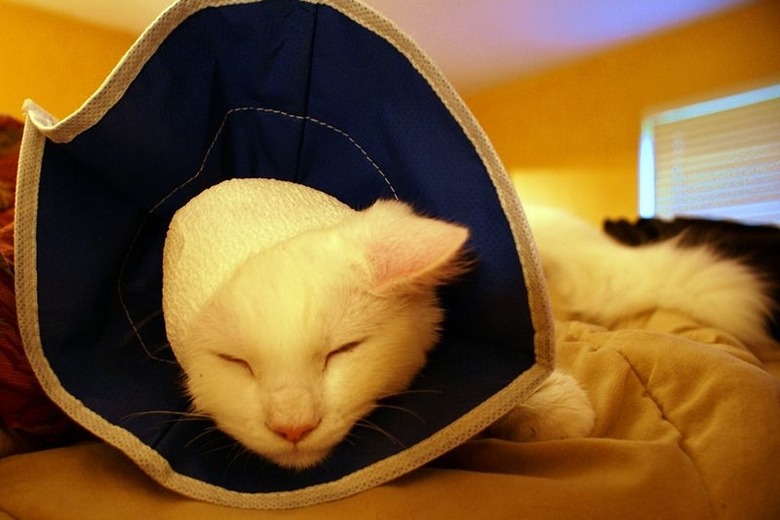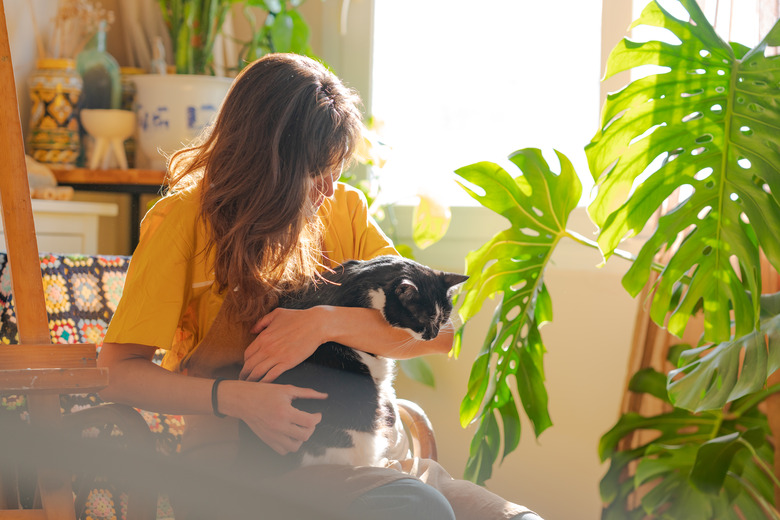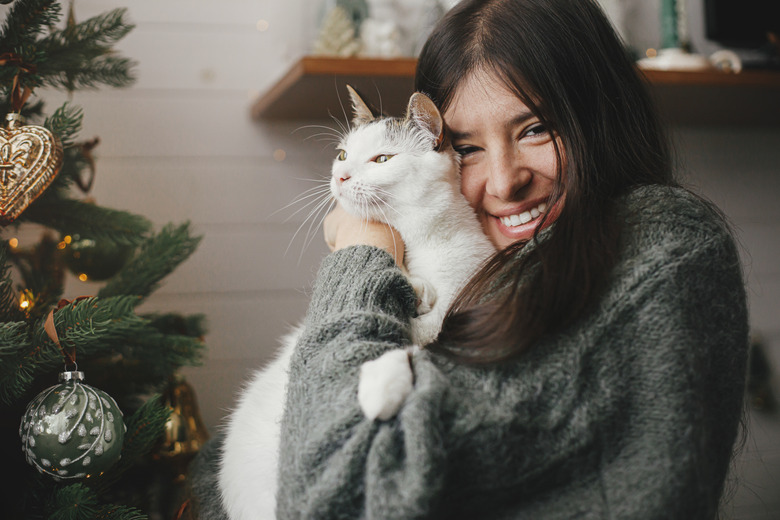What To Feed A Cat On A Liquid Diet
Cats can sometimes require a liquid diet as part of either temporary or long-term management of certain health conditions, ranging from different types of cancer to kidney disease in senior cats, to recovery following major surgery. There are products commercially made for this purpose. Learn about these as well as tips for managing liquid diet feeding and questions to ask your veterinarian.
Liquid cat food basics
Liquid cat food basics
If your cat is ill or has difficulty eating or keeping down solid foods, a liquid diet might be an important part of their recovery and treatment. A short-term liquid diet might involve careful hand-feeding using a syringe, although syringe feeding is generally very challenging. Many sick cats are not interested in eating, and they are often nauseous. They might not even swallow liquid food (in this case, the food will just drip out of the cat's mouth). Even if they are cooperative, it is very difficult to provide an adequate amount of food with this method.
For cats with substantial inappetence, a feeding tube is ideal. Short- and long-term liquid feeding can be done through a tube placed either through the cat's nasal passage and down into the esophagus (nasoesophagostomy tube, or NE-tube); an esophagostomy tube (E-tube), which goes through the side of the neck into the esophagus and stomach; or a surgically implanted tube that leads directly to the stomach (called a gastrostomy tube, or G-tube). A gastrostomy tube is appropriate for a feline who might require tube feeding for a month or two.
Before starting a liquid diet, your veterinarian will review your cat's nutritional needs with you. They will also go over how to administer the feedings and care for the tube.
Commercial liquid cat food products
Commercial liquid cat food products
There are a variety of commercial liquid diet products available for felines.
- Standard liquid diets: These include CliniCare Canine/Feline Liquid Diet and Royal Canin Recovery Liquid. They can be purchased from your veterinarian or ordered from a variety of retailers online.
- Products for cats with kidney disease: CliniCare RF and Royal Canin Renal Liquid for Cats are among the liquid diets that your veterinarian might prescribe if your pet has renal failure or other kidney issues.
- Canned foods: Some wet cat foods, such as Hill's Urgent Care A/D and Royal Canin Recovery Ultra Soft Mousse in Sauce, can be used for feeding similar to a liquid diet, but they need to be blended and diluted. Eukanuba makes a high calorie canned formula that might be appropriate for some cats.
Certain other liquid foods, such as Rebound Recuperation Formula for Cats, are not meant to be a complete diet but a supplement for adult cats who are already eating some food on their own. If you have older cats, your veterinarian will prescribe the best product for your pet's condition.
Can I make a homemade liquid diet for my cat?
Can I make a homemade liquid diet for my cat?
No, concocting diets on your own is a bad idea. Homemade diets are not as nutritionally complete as pet food, and they can cause a cat to develop taurine deficiency, a serious complication that occurs when they do not ingest enough of this essential amino acid. In addition, trying to create your own liquid diet might prolong the amount of time before your cat gets the nutrition they need. This can set up a cat for developing hepatic lipidosis, or "fatty liver," a life-threatening liver disease that can affect cats in as little as two days if they are not ingesting enough calories.
Cats with inappetence often need to be hospitalized for supportive care, like hydration and correction of electrolyte imbalances via intravenous fluids.
If your cat is eating some food on their own and your veterinarian recommends it, you can also try a puree of wet cat food or kitten food blended with chicken baby food or savory broth, like chicken broth, to tempt them. If your cat prefers a particular kind of food; cat food topper; or soft, lickable cat treat, a mixture containing these might increase their appetite. Even though your veterinarian would normally not recommend a food like Purina Fancy Feast, getting a variety pack is something that might entice your cat to eat. You can also mix water with dry food or freeze dried cat food to increase hydration. Do not use dog food or liquid diets designed for humans.
Good nutrition is essential for your cat to heal from illness or injury and especially so when there is a long-term problem, such as cancer. Make sure to follow your veterinarian's advice. Discuss your cat's diet and ask if there is anything in particular you can add to ensure your cat gets all the vitamins and nutrients they need.
Proper liquid feeding techniques for cats
Proper liquid feeding techniques for cats
If your veterinarian directs you to feed your cat a liquid diet using a syringe, make sure to go slow so that your cat can swallow what you are giving them. Food that is aspirated, or breathed into the lungs, can cause pneumonia and ultimately lead to death. If your cat requires a liquid diet and you have difficulty feeding them by hand, you should talk to your veterinarian right away about a short- or long-term tube option because it only takes a matter of days for an inappetent cat to develop hepatic lipidosis.
The bottom line
The bottom line
If your cat has a significant decrease in appetite, they might require supportive care to prevent serious issues, like taurine deficiency or hepatic lipidosis. Your veterinarian might suggest syringe feeding a liquid diet as a temporary measure, but this can often be challenging. A more effective method prescribed by your veterinarian might be tube feeding via a nasoesophagostomy, esophagostomy, or gastrostomy tube. There are many liquid diets for cats on the market. To support your cat's health and immune system, it is very important to follow your veterinarian's directions regarding the appropriate feline liquid diet products, feeding instructions, and feeding tube care and maintenance.


